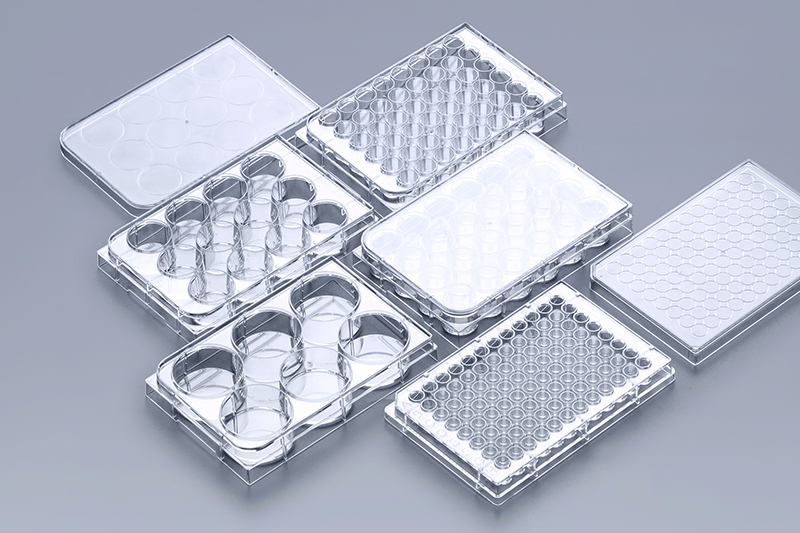Ultra-low attachment cell culture plates are a common cell culture consumable, and its commonly used specifications are 6-well, 12-well, 24-well, 48-well, 96-well, etc., to meet different research needs. This consumable is mainly used in 3D cell culture.
The ultra-low attachment cell culture plate uses a covalently bonded hydrogel surface layer, which is hydrophilic and charge neutral, and has low cell adhesion, protein adsorption and enzyme activity, which can help cells better aggregate and form microspheres. Easy and convenient 3D cell culture. Widely used in stem cell differentiation, tumorigenesis, and drug discovery.
 Ultra-Low Attachment Cell Culture Plates
Ultra-Low Attachment Cell Culture Plates
Three-dimensional cell culture technology refers to the co-cultivation of carriers with different three-dimensional structures and various types of cells in vitro, so that cells can migrate and grow in the three-dimensional space structure of the carrier to form a three-dimensional cell-carrier complex. This culture method can not only simulate the in vivo environment to the greatest extent, but also show the advantages of intuitiveness and controllable conditions of cell culture.
Taken together, the ultra-low attachment cell culture plates are a simple and flexible cell culture tool, which has a very wide range of applications in 3D cell culture.
The FAI climbed 5.9 percent year-on-year in the first 11 months of 2018, quickening from the 5.7-percent growth in Jan-Oct, the National Bureau of Statistics (NBS) said Friday in an online statement.
The key indicator of investment, dubbed a major growth driver, hit the bottom in August and has since started to rebound steadily.
In the face of emerging economic challenges home and abroad, China has stepped up efforts to stabilize investment, in particular rolling out measures to motivate private investors and channel funds into infrastructure.
Friday's data showed private investment, accounting for more than 60 percent of the total FAI, expanded by a brisk 8.7 percent.
NBS spokesperson Mao Shengyong said funds into weak economic links registered rapid increases as investment in environmental protection and agriculture jumped 42 percent and 12.5 percent respectively, much faster than the average.
In breakdown, investment in high-tech and equipment manufacturing remained vigorous with 16.1-percent and 11.6-percent increases respectively in the first 11 months. Infrastructure investment gained 3.7 percent, staying flat. Investment in property development rose 9.7 percent, also unchanged.
 English
English


















































